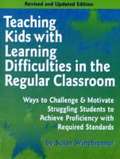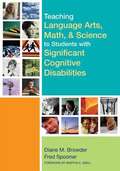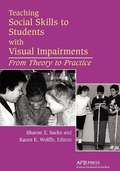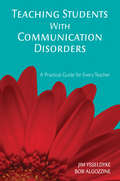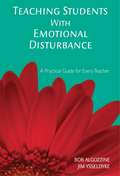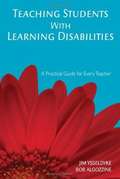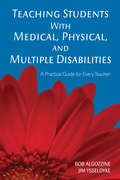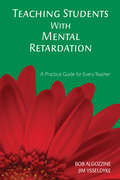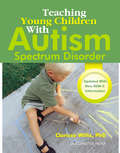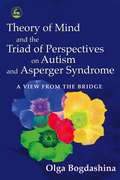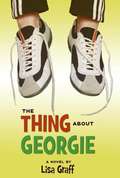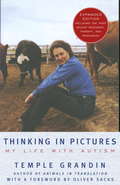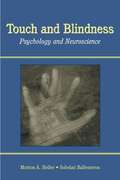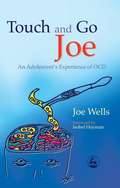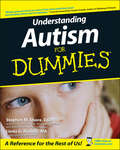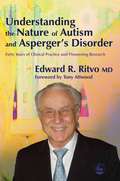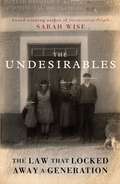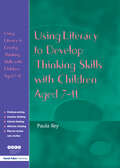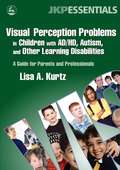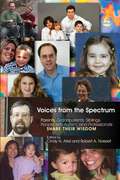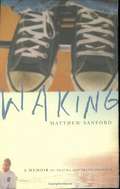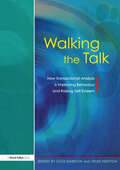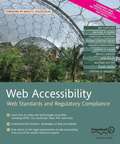- Table View
- List View
Teaching English Learners in Inclusive Classrooms
by Elda DuránTeachers and teacher trainers will find this clear, well-written text to be an invaluable resource in addressing the needs of myriad and unique students, especially those with disabilities.
Teaching Kids with Learning Difficulties in the Regular Classroom: Ways to Challenge and Motivate Struggling Students to Achieve Proficiency with Required Standards
by Susan WinebrennerProven ways to help special education, "slow", and "remedial" students learn and achieve.
Teaching Language Arts, Math, and Science to Students With Significant Cognitive Disabilities
by Diane M. Browder Fred SpoonerUnder NCLB, students with severe disabilities are expected to make progress on state academic content standards in language arts, math, and science. But what material should educators teach from these three content areas, and how should they teach it? With this groundbreaking textbook, future educators will have the answers they need. The first major research-to-practice resource on this critical topic, this text goes beyond functional and access skills and shows educators how to make the general curriculum accessible to students of all ages with significant cognitive disabilities. Twenty-five of the best-known researchers in the field prepare educators to - adapt lessons in language arts, math, and science for students with disabilities - identify meaningful instructional content - create effective learning environments through instructional procedures such as peer tutoring, cooperative learning, and co-teaching - set appropriate expectations for student achievement - align instruction with state content standards and alternate assessment For each content area, future teachers will get a solid research foundation blended with teaching examples, guidelines, and helpful figures and tables. A timely textbook for pre-service educators--and a valuable reference for in-service teachers seeking guidance--this important resource will raise expectations for students with disabilities and ensure their progress in key academic areas. Learn how to teach - Language Arts. Move beyond sight-word recognition and teach the literacy components identified by the National Reading Panel - Math. Help students learn higher-level math concepts such as problem solving, reasoning, connections, and representations, as well as functional skills - Science.
Teaching Social Skills to Students with Visual Impairments: From Theory to Practice
by Sharon Z. Sacks Karen E. WolffeHow do children become social beings? When a child is unable to observe visually and imitate how other people react and interact, this complex developmental process can become fragmented and incomplete. As a result, providing specific information, direct instruction, and opportunities for social interaction to children who are blind or visually impaired is critical to their growth and education. Edited by two groundbreaking educators and researchers, with contributions from other outstanding educators and researchers in this area, Teaching Social Skills to Students with Visual Impairments explores what theory can tell us about how children who are visually impaired become socially skilled individuals. It then presents a compendium of techniques and strategies for helping youngsters, from preschoolers through young adults, including those with additional disabilities, develop and refine social skills.
Teaching Students With Communication Disorders: A Practical Guide for Every Teacher
by Dr James E. Ysseldyke Bob AlgozzineFocusing on teaching students with communication disorders, the authors offer practical teaching strategies and provide brief definitions, indicators, and behaviors associated with speech and language disorders.
Teaching Students with Emotional Disturbance: A Practical Guide for Every Teacher (Practical Approach To Special Education For Every Teacher Ser. #Vol. 11)
by Bob Algozzine Jim YsseldykeValuable insight and sound intervention strategies for addressing the needs of students with social and emotional problems!When a student is inattentive, extremely anxious, or has an outright tantrum in the classroom, ascertaining the exact cause may be difficult, but it is a critical step in reaching and teaching the students who exhibit these behaviors. In Teaching Students With Emotional Disturbance, Ysseldyke and Algozzine show readers how to recognize the cognitive, academic, physical, communicational, and behavioral characteristics of several forms of emotional disturbance and offer specific strategies for responding to anxiety issues, opposition and noncompliance, tantrums, disruptiveness, inattention, task avoidance, and more.Highlights include:* A pretest and posttest to help readers assess their understanding about the origins of social and emotional difficulties and how they are best addressed* Effective interventions and instructional adaptations for students who have emotional problems* Trends and issues currently influencing how students with social and emotional problems are taught* Key vocabulary termsThe authors offer a wealth of information and resources so that teachers can better identify the needs of students with emotional disturbance and help them succeed in the classroom.
Teaching Students with Learning Disabilities: A Practical Guide for Every Teacher
by Bob Algozzine James E. YsseldykeThe characteristics associated with LD, and practical teaching strategies proven to increase the success rate of students both inside and outside the classroom.
Teaching Students With Medical, Physical, and Multiple Disabilities: A Practical Guide for Every Teacher
by Bob Algozzine Dr James E. YsseldykeLearn about assistive technologies, helpful adjustments to school and classroom environments, and effective instructional modifications specifically designed to support students with medical, physical, and multiple disabilities.
Teaching Students With Mental Retardation: A Practical Guide for Every Teacher
by Bob Algozzine Dr James E. YsseldykeLearn what effective teachers do to support students with mental retardation in and out of the inclusive classroom! Providing special and general educators with highly effective strategies for enhancing the academic and social skills of students with mental retardation, and offering a pretest, posttest, and key vocabulary terms, this exceptional resource also discusses: Common causes of mental retardation Diagnosing mental retardation Cognitive, academic, physical, behavioral, and communicational characteristics Methods for improving students’ functional academic, social, self-care, and work skills Instructional approaches for students with severe disabilities Issues such as prevention of mental retardation and transitioning from school to work
Teaching Young Children with Autism Spectrum Disorder
by Clarissa WillisWhat do you do when a three-year-old with autism falls on the floor kicking and screaming? How do you communicate with a child who looks away and flaps his hands? Who can help if you suspect a child in your class has autism? Preschool can be overwhelming for a child with autism. Autism affects how a child communicates, behaves, and relates to others. Teachers need to know what they can do to help children with autism reach their full potential. Teaching Young Children With Autism Spectrum Disorder is a straightforward, easy-to-understand guide to working with children who have autism. It explains the major characteristics associated with autism and helps teachers understand the ways children with autism relate to the world. Each chapter offers specific strategies for teachers to use, including setting up a proactive preschool environment, helping children learn life skills, managing behavior, helping children with autism communicate, encouraging children with autism to play, helping them to get along with others, and working with families. Teaching Young Children With Autism Spectrum Disorder helps teachers connect with all children in meaningful ways, allowing children with autism to learn and grow. Updated with new DSM-5 information.
A Team of Two (Houghton Mifflin Harcourt Vocabulary Readers #Leveled Reader: Level: 5, Theme: 4.2)
by Minnie TimentiIntroduction to assistance dogs.
Theory of Mind and the Triad of Perspectives on Autism and Asperger Syndrome: A View from the Bridge
by Olga BogdashinaInspired by the often uncomfortable interplay between autistic individuals, parents and professionals in understanding autistic spectrum conditions, Olga Bogdashina uses the concept of Theory of Mind (ToM) to consider these groups' different (and often conflicting) perspectives. ToM is the ability to imagine and make judgements about what others feel and think; its absence in autistic individuals is called 'mindblindness'. This book addresses the 'mindblindness' of people united in their interest in autism but divided by their different angles and perspectives. Divided into four parts, the book first defines autism, then the views of the three main groups working with it - autistic individuals, parents and professionals - under the headings of classifications, diagnosis, causes, development, theories and treatment. By comparing and reconciling the different perspectives in this way, the book helps each group to understand and predict each other's responses and behaviours. This enlightening and innovative book offers a unique way of 'stepping in each other's shoes' and is a valuable resource for all people living or working with autism.
The Thing About Georgie
by Lisa GraffAs far as Georgie is concerned, everyone has a "thing" The thing about poodles is that Georgie Bishop hates to walk them. The thing about Jeanie the Meanie is that she would rather write on her shoe than help Georgie with their Abraham Lincoln project. The thing about Andy's nonna is that she kisses Georgie's cheeks and doesn't speak one word of English. The thing about Georgie's mom is that she's having a baby--a baby who will probably be taller than Georgie very, very soon. The thing about Georgie . . . well, what is the thing about Georgie?
Thinking in Pictures: And Other Reports from My Life with Autism
by Temple GrandinTemple Grandin, Ph.D., is a gifted animal scientist who has designed one-third of all the livestock-handling facilities in the United States. She also lectures widely on autism--because Temple Grandin is autistic, a woman who thinks, feels, and experiences the world in ways that are incomprehensible to the rest of us. In this unprecedented book, Grandin delivers a report from the country of autism. Writing from the dual perspectives of a scientist and an autistic person, she tells us how that country is experienced by its inhabitants and how she managed to breach its boundaries to function in the outside world. What emerges in Thinking in Pictures is the document of an extraordinary human being, one who, in gracefully and lucidly bridging the gulf between her condition and our own, sheds light on the riddle of our common identity.
Touch and Blindness: Psychology and Neuroscience
by Morton A. Heller Soledad BallesterosThis is a scholarly document concerning the neurological aspects of visual impairment.
Touch and Go Joe: An Adolescent's Experience of OCD
by Joe WellsPart of the Reading Well scheme. 35 books selected by young people and health professionals to provide 13 to 18 year olds with high-quality support, information and advice about common mental health issues and related conditions. As many as 2 in every 100 people suffer from Obsessive-Compulsive Disorder (OCD), and 16-year-old Joe Wells is one of them. In Touch and Go Joe, he tells the story of his battle with OCD from its insidious beginnings at age 9 and increasingly intrusive symptoms, to diagnosis at age 12. Having struggled to keep the condition a secret for years, he is now able to talk and write openly about OCD and how he battled to overcome it. This book is packed with advice and coping strategies, as well as first-hand accounts of available treatments such as cognitive behavioural therapy and medication. Written in an informal and accessible style, and including his own humorous illustrations, Touch and Go Joe gives an upbeat yet realistic look at the effect of OCD on adolescent life. This honest and amusing account will raise awareness of this all-too-common, yet frequently misdiagnosed disorder and will be of interest to anyone who has suffered from or knows someone who has suffered from OCD, including children and adolescents, teachers, psychologists, psychiatrists, mental health professionals, parents and carers.
Understanding Autism For Dummies
by Stephen Shore Linda G. RastelliAutism affects more than 1 million children and adults in the United States, and parents may be confused by the behavior of autistic children. This book provides help-and hope-by explaining the differences between various types of autism and delivering the lowdown on behavioral, educational, medical, other interventions. Featuring inspiring autism success stories as well as a list of organizations where people who support those with autism can go for additional help, it offers practical advice on how to educate children as well as insights on helping people with autism use their strengths to maximize their potential in life. Stephen Shore, EdD (Brookline MA), serves on the board for several autism spectrum-related organizations and he has written Beyond the Wall: Personal Experiences with Autism and Asperger Syndrome (1-931282-00-5) and edited Ask and Tell: Self Advocacy and Disclosure For People on the Autism Spectrum (1-931282-58-7). Linda G. Rastelli (Middletown, NJ) is a veteran journalist who specializes in health and business. Temple Grandin, PhD (Fort Collins, CO) is the author of the bestselling Thinking in Pictures (0-679-77289-8) and Emergence: Labeled Autistic (0-446-67182-7).
Understanding the Nature of Autism and Asperger's Disorder: Forty Years of Clinical Practice and Pioneering Research
by Edward R Ritvo Anthony AttwoodEdward R. Ritvo md is an internationally recognized medical expert, researcher and pioneer in the field of autism and Asperger's disorder and co-author of the official diagnostic criteria in the DSM (Diagnostic and Statistical Manual of Mental Disorders). Much of what is known about these disorders today is based on his painstaking research and groundbreaking discoveries. In this book he shares his forty years' experience and opens his extensive UCLA casebook to the reader. Understanding the Nature of Autism and Asperger's Disorder is 'a consultation with Prof. Ritvo' - a thoroughly accessible introduction for professionals, families, spouses and individuals with autism and Asperger's Disorder. Prof. Ritvo traces the historical development of understanding about autism and Asperger's Disorder, from the centuries of misdiagnoses and the first recognition of the characteristics of the disorders to his own highly-regarded methods for making a diagnosis. Drawing on case histories from forty years' of clinical practice, he explains their basic nature, what the causes are, what is different in the brain, treatments that work (and those that don't), what a child with a diagnosis might be like when he or she grows up, and what future research may hold. This book will be an absolute must-read for anyone with an interest in autism and Asperger's Disorder, whether a practitioner, a parent, a student, or an affected individual.
The Undesirables: The Law that Locked Away a Generation
by Sarah WiseThrough the early twentieth century, the British Government locked away over 50,000 innocent people. Their &‘crimes&’? Being poor and unyielding. This is their story. 'The heartrending stories Sarah Wise has unearthed beggar belief… beautifully researched and truly compelling.' Catherine Bailey, author of Black Diamonds By 1950, an estimated 50,000 people had been deemed &‘defective&’ by the British government and detained indefinitely under the 1913 Mental Deficiency Act. Their &‘crimes&’ were various: women with children born out of wedlock; rebellious teenagers caught shoplifting; those with epilepsy, hearing impairments and chronic illnesses who had struggled in school; and many who were simply &‘different&’. Forcibly removed from their families and confined to a shadow world of specialist facilities in the countryside, they were hidden away and forgotten – out of sight, out of mind. Through painstaking archival research, award-winning historian Sarah Wise shines a light on this shameful chapter. Piecing together the lives irrevocably changed by this devastating legislation, The Undesirables provides a compelling study of how early twentieth-century attitudes to class, gender and disability resulted in a nationwide scandal – and how they continue to shape social policy to this day.
Using Literacy to Develop Thinking Skills with Children Aged 7-11
by Paula IleyThese creative off-the-shelf activities will spark children's thinking skills through speaking, listening, reading and writing. Busy teachers wanting to shake up their lessons will find them indispensable. Includes: problem-solving: creative and critical thinking; emotional thinking; questioning skills and plan-do-review formats clear explanation of underpinning theory advice on differentiating activities links to the National Literacy Strategy Framework.
Visual Perception Problems in Children with AD/HD, Autism, and Other Learning Disabilities: A Guide for Parents and Professionals
by Lisa A. KurtzThis book provides a comprehensive overview of vision problems in children with developmental disabilities such as AD/HD, autism spectrum disorders, and specific learning disabilities. Written in a very accessible style, it is appropriate for parents and professionals alike and offers non-technical explanations of how vision difficulties are screened for and advice on where to seek appropriate professional care. Lisa Kurtz outlines a range of activities for strengthening children's functional vision and perceptual skills using simple, homemade materials that are readily available in the home or classroom. This is an excellent practical companion for parents of children with visual perception problems and the professionals who work with them.
Voices from the Spectrum: Parents, Grandparents, Siblings, People with Autism, and Professionals Share Their Wisdom
by Robert A. Naseef Cindy N. ArielAuthor of Could It Be Autism? A Parent's Guide to the First Signs and Next Steps Voices from the Spectrum is a compelling collection of personal accounts from people on the autism spectrum and those who care for them, including professionals, friends and family members. The essays in this collection tell of both the positive and negative effects of autism on individuals and families, and pose the question: is a diagnosis on the autism spectrum a puzzle to be solved, or something to be embraced and accepted? The broad scope of this book presents insights into the autism spectrum from many different perspectives - from first-hand accounts of the autistic child's school and childhood experiences to parents' and grandparents' reactions to a diagnosis. A number of chapters written by professionals explain their motivations for working with autistic people and reveal what they have learned from their work and how it has affected their lives. The contributors describe experiences of autism from the mildest to the most severe case, and share their methods of adapting to life on the spectrum. Voices from the Spectrum will appeal to a wide readership of adults and younger people on the autism spectrum, their families and friends, as well as practitioners.
Waking: A Memoir of Trauma and Transcendence
by Matthew SanfordThis memoir about a car accident that ended the lives of two of the author's family members and rendered the author a paraplegic describes how the surviving family members picked up the pieces of their lives, his recuperation at the Mayo Clinic, and his decision to become a disabled yoga instructor.
Walking the Talk: How Transactional Analysis is Improving Behaviour and Raising Self-Esteem
by Giles Barrow Trudi NewtonFirst Published in 2006. Routledge is an imprint of Taylor & Francis, an informa company.
Web Accessibility: Web Standards and Regulatory Compliance
by Shawn Lawton Henry Andrew Kirkpatrick Patrick H. Lauke Bruce Lawson Bob Regan Richard Rutter Mark Urban Christian Heilmann Cynthia Waddell Jim Thatcher Michael R. BurksThe power of the Web lies in the fact that anyone and everyone can access it. However, this should also extend to users with disabilities--accessibility is about making websites accessible to those with aural, visual, or physical disabilities, or rather, constructing websites that don't exclude these people from accessing the content or services being provided. This isn't difficult to do, and doesn't require anything more than your normal toolset, be it HTML, CSS, JavaScript, Flash, or whatever else. All you need to do is use these tools in the right way, and bear in mind the guidelines that exist to help you keep your web sites accessible, and the laws that enforce web accessibility around the world. This book gives you all you need to know about web accessibility, whether you are a web designer or developer who wants their sites to be accessible, or a business manager who wants to learn what impact the web accessibility laws have on their businesses' web sites.

